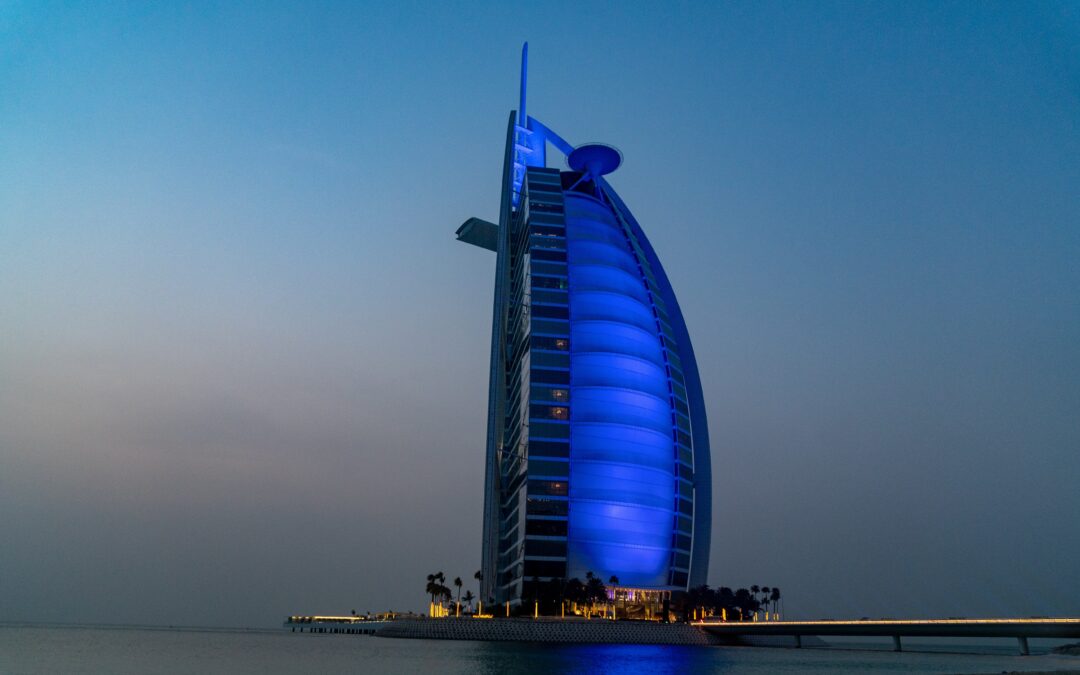For millennia, the region now recognized as the United Arab Emirates has been populated by humans. The area linked trade between the civilizations of Mesopotamia, the Indus Valley, and as far afield as the Levant. Throughout the emirate, archaeologists have unearthed some incredible finds including Saruq Al Hadid, Al Sufouh, and Al-Ashoosh. Researchers have concluded that the region has been inhabited by humans since prehistoric times.
Nevertheless, until relatively recently, Dubai was just a small rural fishing community. It grew into a regional trading hub in the early 20th century, and it wasn’t not until the late 20th and early 21st century that the city turned its sights to tourism. Dubai has reimagined itself as the zenith of luxury travel, boasting destinations like the 2,700-foot tall Burj Khalifa, the world’s tallest building. Dubai also ranks second in the world after London for cities with the highest number of five-star hotels. Here’s what you need to know about the history of this amazing place.
From Swamp to “the Walled City”
The s’site that would eventually become Dubai was a huge mangrove swamp. However, by 3000 BCE, that swamp had mostly dried out and the land became habitable. During the Bronze Age, nomadic cattle herders settled there. They began successfully farming date palm on large plantations by 2500 BCE, marking the first known use of the site for agriculture. Jumeirah, an extremely exclusive and sought-after area of the city today, was once a stop along the trade route that links modern-day Oman and Iraq.
In the late 18th century, Dubai became known as “the walled city,” with Al Fahidi Fort built around the same time that Dubai became a dependency. In 1820 CE, local rulers negotiated a maritime truce with the British. This paved the way for Dubai to become an trading hub for wealthy merchants from all over the world. In 1833 CE, Maktoum bin Butti and the Bani Yas tribe settled in the Shindagha Peninsula at the mouth of Dubai Creek and declared the town’s independence from Abu Dhabi. This marked the start of the Al Maktoum dynasty, which continues to rule in the present. It also established Dubai as a fishing village and pearl center.
Trading and Expansion
Trading continued to thrive in Dubai. Its economy was given a further boost in 1894, when the government implemented new rules granting tax exemption for expatriates. The move triggered an influx of foreign workers to the city. New regulations also attracted foreign traders, who were eager to take advantage of the excellent market conditions. Dubai’s pearl market was negatively impacted when the Japanese developed the artificial pearl.
However, in 1966, Dubai’s fortunes were changed forever, when prospectors discovered oil. Between 1968 and 1975, Dubai’s population more than tripled. British troops left the region, and Vice President Sheikh Rashid bin Saeed Al Maktoum started to develop Dubai. The rapid rise in oil prices allowed him to focus on the city’s infrastructure.
Dubai’s expansion was rapid and impressive. When Sheikh Rashid became ruler of Dubai, the Maktoum family created the United Arab Emirates, with seven emirates forming a coalition. Abu Dhabi and Dubai joined the UAE on the condition that they receive majority control of the government. Their governments were also granted veto power regarding national security issues. Abu Dhabi is the capital of the United Arab Emirates today. Dubai is an extremely important economic and political hub, however. It has significantly affected the evolution of Middle Eastern architecture and culture.
An Oil Powerhouse and a Tourist Destination
Following the discovery of oil, Dubai’s government invested heavily on public infrastructure, building roads, buildings, hospitals, and schools. Today, Sheikh Zayed Road is lined with modern infrastructure. There are dozens of futuristic skyscrapers, which is an impressive feat. Prior to construction, the area was a desolate wasteland.(5) In the 1990s, Dubai turned its attentions to tourism, largely due to the realization that the city’s oil resources would eventually run out. At the time, experts predicted that the UAE would run out of oil by 2019. The government now believes that oil reserves in Dubai will last until at least 2045.
Dubai is located on what is believed to be the hottest desert on earth, with temperatures reaching 118.9 degrees Fahrenheit in 1996. However, it rose out of the sands to become a critical commercial hub, its financial center home to more than 2,000 companies today. In addition to Burj-al-Arab, the world’s only 7-star hotel, Dubai also has the world’s tallest hotel, Gevora Hotel Dubai, which stands some 1,100 feet high.
With glittering blue seas, futuristic skyscrapers, and an array of artificial islands, Dubai is a miracle of modern construction. Over 80 percent of Dubai’s inhabitants are expatriates, representing some 117 places of origin. From the Palm Islands megaproject to Jumeirah, the city is a marvel of modern architecture and engineering, much of it built on land that was little more than desert until relatively recently. Over the course of its millennia in existence, Dubai has become a diverse, modern city with a highly developed transport system and booming entertainment industry.

